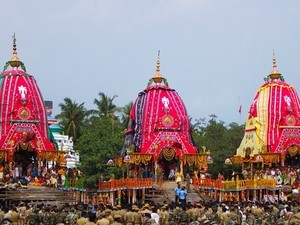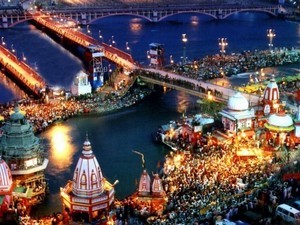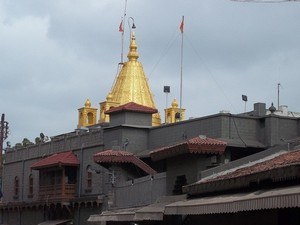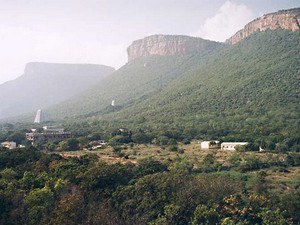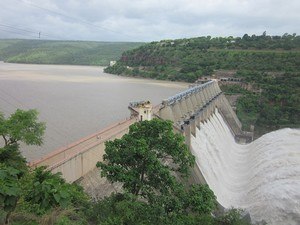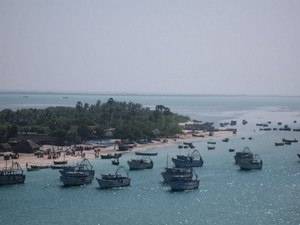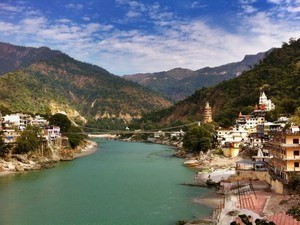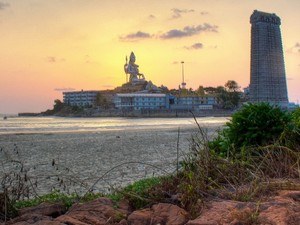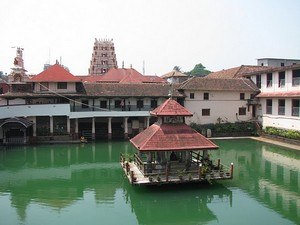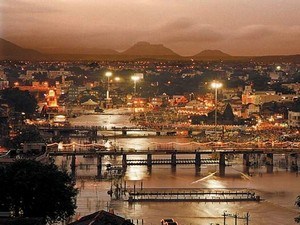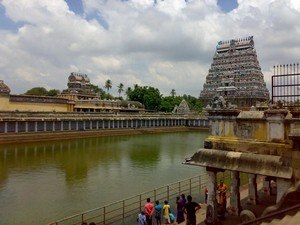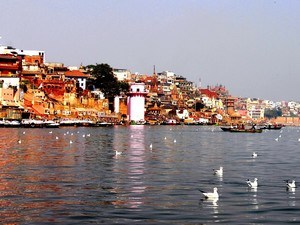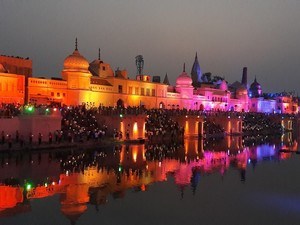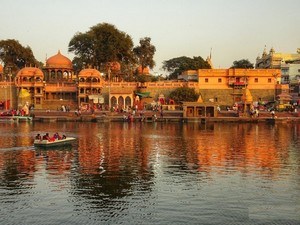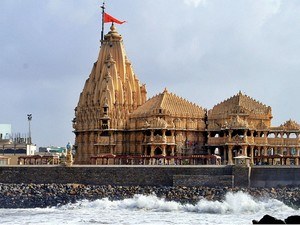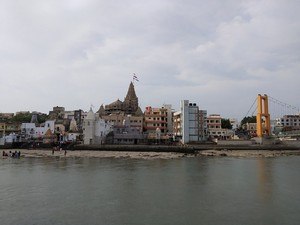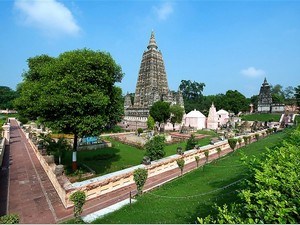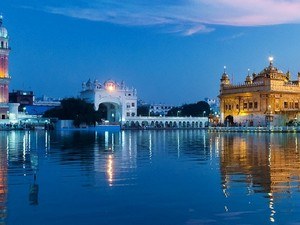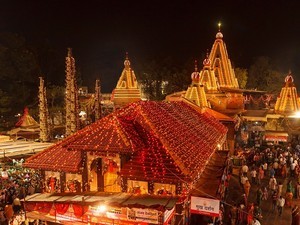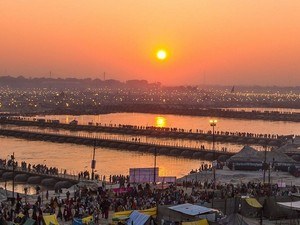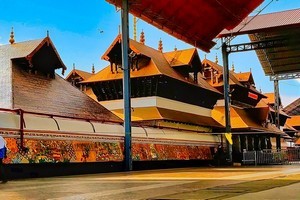1
DAY 1 : MADURAI SIGHTSEEING
DAY 1 : MADURAI SIGHTSEEING
 Sightseeing
Sightseeing
Leisure / No Sightseeing
About Sri Meenakshi Sundareswarar Temple
At a distance of 2 km from Madurai Junction Railway Station, Arulmigu Meenakshi Sundareswarar Temple, also known as Arulmigu Meenakshi Amman Thirukkovil, is a historic Hindu temple located on the southern bank of the Vaigai River in Madurai, Tamil Nadu, India. It is one of the biggest and most popular temples in India, and among the must-visit places as part of
Madurai tour packages. The temple is dedicated to the goddess Meenakshi, a form of Parvati, her consort Sundareswarar, a form of Shiva and her brother Alagar, a form of Vishnu. The temple is theologically significant as it represents a confluence of the Shaivism, Shaktism and Vaishnavism denominations of Hinduism. It was shortlisted as one of the top 30 nominees for New Seven Wonders of the World. It is one of the the prime
places of Pilgrimage in Tamilnadu. This temple is one .....
 Duration of visit: 2-3 Hours
Duration of visit: 2-3 Hours
 Timings: 5 AM to 12:30 PM & 4 PM to 9:30 PM
Timings: 5 AM to 12:30 PM & 4 PM to 9:30 PM
BREAK FOR MEALS / HOTEL CHECK-IN | CHECK-OUT / SHOPPING / LEISURE
At a distance of 3 km from Madurai Junction Railway Station and 1 km from Meenakshi Temple, Thirumalai Nayak Mahal is an ancient palace situated in Madurai. It is one of the popular places of heritage in Tamilnadu, and among the major Madurai tourist places.
Thirumalai Nayak Mahal was constructed in the Indo-Saracen style by Thirumalai Nayak in the year 1636. After Independence, this palace was declared as a national monument and to date continues to be one of the spectacular monuments of Southern India. It is one of the must include places in Madurai packages. The original palace complex was four times bigger than the present structure. The palace was designed by an Italian architect.
The main palace is divided into two parts, Swargavilasa and Rangavilasa and only the Swargavilasa is survived today. .....
 Duration of visit: 1-2 Hours
Duration of visit: 1-2 Hours
 Timings: 9 AM to 1 PM & 2 PM to 5 PM, Light show at 6.45 PM & 8.15 PM
Timings: 9 AM to 1 PM & 2 PM to 5 PM, Light show at 6.45 PM & 8.15 PM
At a distance of 1 km from Madurai Junction Railway Station & 1.5 km Meenakshi Temple, The Koodal Alagar Temple, also known as Arulmigu Koodalazhagar Thirukoil, is another important temple in Madurai and among prime sightseeing to be included in your Madurai Trip. Dedicated to Lord Vishnu, this temple is believed to be older than the Meenakshi temple. It is one of the important places to visit in Madurai.
A unique feature of this temple is the three different postures of the same God. The three figures of Vishnu are in standing, sitting and reclining postures. These three figures of the deity are known by three different names. The most venerated of the three figures is Lord Vishnu in the seated posture. The seated Lord Vishnu is locally known as Lord Koodal Alagar from whom the temple derives its name. The reclining idol is known as Sri Ranganatha. Sri .....
 Duration of visit: 1 Hour
Duration of visit: 1 Hour
 Timings: 5.30 AM to 12 PM and 4 PM to 9 PM
Timings: 5.30 AM to 12 PM and 4 PM to 9 PM
2
DAY 2 : VISIT RAMESWARAM & TRAVEL TO MADURAI
%%Itinerary_Title_Day2%%
 Sightseeing
Sightseeing
At a distance of 2 km from Rameshwaram Railway Station (just 100 meters away from east entrance of Rameshwaram Temple), Agnitheertham is said to be the place where Rama worshipped Lord Shiva to wash off his sins of killing Ravana. It is one of the prime place to visit on a Rameshwaram trip.
It is a sacred place and piligrims believe that taking a bath in Bay of Bengal at Agniteertham will washout one's sins of life time. It is visited by the followers of Lord Shiva as well as Vishnu, whose incarnation was lord Rama.
The sea here is very calm and ideal for bathing.
 Duration of visit: 30 Mins - 1 Hr
Duration of visit: 30 Mins - 1 Hr
 Timings: 6 AM - 6 PM
Timings: 6 AM - 6 PM
About Ramanatha Swamy Temple
At a distance of 2 km from Rameswaram Railway Station, Ramanatha Swamy Temple is a Hindu temple located on Rameswaram Island in the state of Tamil Nadu, India. It is one of the top pilgrimage sites in India, and among the must include places in
Rameshwaram tour packages. Ramanathaswamy Temple is dedicated to Lord Shiva and is one of the twelve jyotirlinga temples in India. It is also recognized as one of the 275 Paadal Petra Sthalams, which are revered sites glorified by the Nayanars (Shaivite poet-saints) such as Appar, Sundarar, and Sambandar through their devotional songs. Additionally, it is one of the Char Dham pilgrimage destinations, and among the most prominent
pilgrimage sites in Tamil Nadu. The religious importance of this temple can be seen from the popular belief according to which a visit to pilgrimage Kashi is incomplete without .....
 Duration of visit: 1-2 Hours
Duration of visit: 1-2 Hours
 Timings: 5 AM - 1 PM & 3 PM - 9 PM
Timings: 5 AM - 1 PM & 3 PM - 9 PM
At a distance of 18 km from Rameswaram, Dhanushkodi, Dhanushkodi is an abandoned town at the south-eastern tip of Pamban Island in Tamil Nadu. It is one of the must-include places in Rameswaram heritage packages.
Dhanushkodi is located at the southern tip of Pamban Island, separated from the mainland by the Palk Strait, approximately 24 kilometers west of Talaimannar in Sri Lanka. The town was entirely devastated by the Rameswaram cyclone in 1964 and has remained uninhabited since that disaster. The only remnant of the cyclone is the Kodanda Rama Swamy Temple. Following the storm, the Government declared the town as Ghost town and unfit for living. Although devoid of inhabitants, Dhanushkodi continues to attract tourists due to its significant historical and mythological associations.
The name Dhanushkodi translates to 'Tip of the Bow'. The location known as 'Arichal Munai' marks the convergence of the Indian .....
 Duration of visit: 30 Mins - 1 Hr
Duration of visit: 30 Mins - 1 Hr
 Timings: 7 AM - 5 PM
Timings: 7 AM - 5 PM

